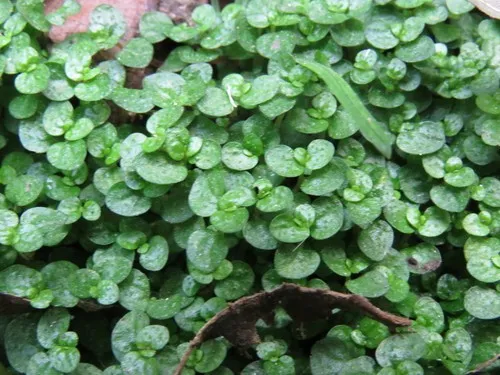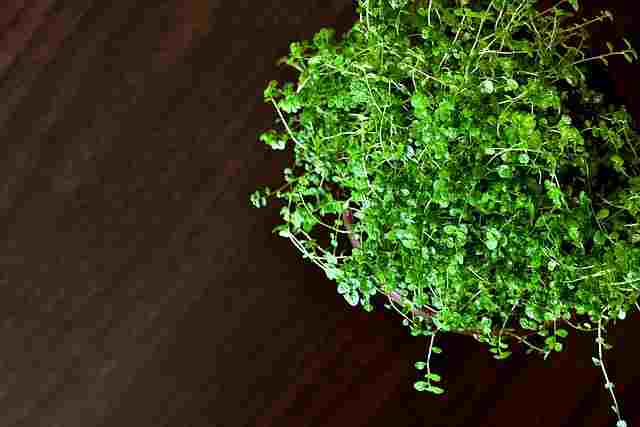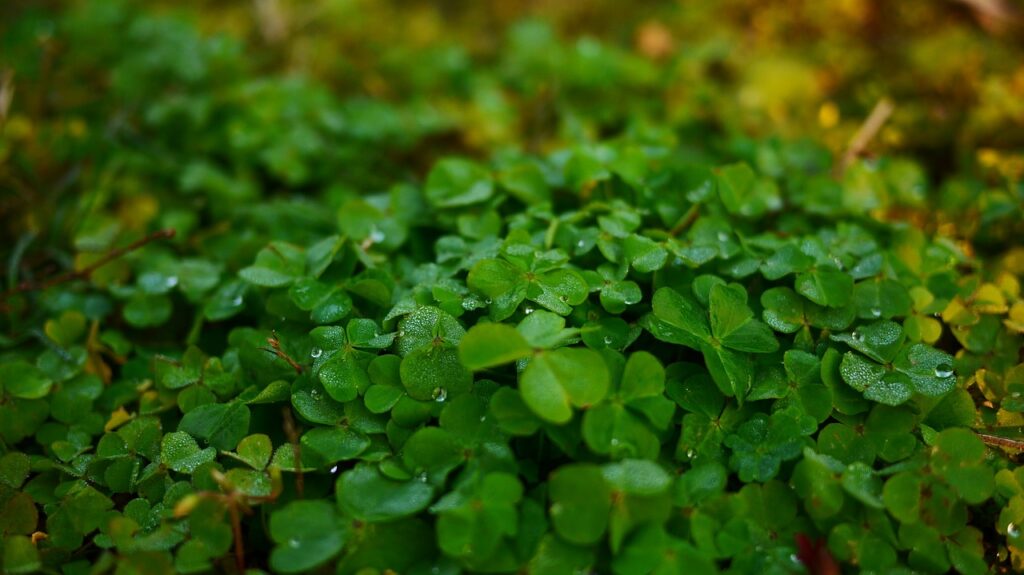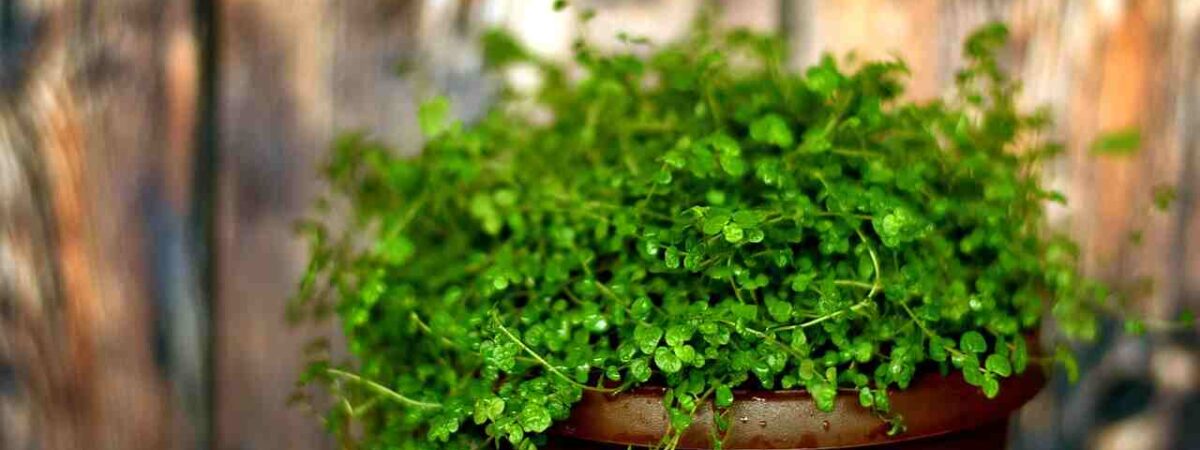Do large houseplants of your house require too much light and “legroom” which reduces you to tears of frustration?
Then you must try the baby’s tears, which weep prettily in the shade.
The leaves of the baby’s tear are so tiny and beautiful that it resembles luxuriant moss. Scientifically termed the Soleirolia soleirolii the baby’s tear plant can carpet the ground in fairy gardens and terrariums or beneath any leggy houseplant and bonsai trees.
If growing in hanging baskets or pots, this beautiful houseplant can spiffily over the sides of hanging baskets or pots.
Plant Overview

Baby’s tears is a charming and beautiful houseplant that forms a dense mat of lush, rich green leaves where it grows and bears some creeping stems that grow horizontally in flat surfaces or trails similar to a full head of hair that grows from hanging baskets.
Baby’s tear plant is popular for generations and is very easy to grow. The thick growing leaves of the baby’s tears plant make it an excellent houseplant for just about every decorating style.
Being native to the western Mediterranean islands of Corsica and Sardinia the baby’s tear plant can grow up to 1 to 5 inches tall.
This plant grows as a creeping plant that roots itself wherever it spreads out. The thread-like green or pink shoots and 1/4-inch leaves of this plant cause it to resemble moss.
It is often used as an outdoor plant in hot climates and as a ground cover in shady spots. Sometimes insignificant pinkish-white blooms appear in the plant during late spring or early summer.
Types of Baby’s Tears
Following are some of the popular varieties of baby’s tears.
soleirolii ‘Aurea’:
This cultivar of this houseplant offers yellow-green, rather than green leaves.
S. soleirolii ‘Golden Queen’:
This type of baby’s tear also shows more golden rather than the typical green variety.
S. soleirolii ‘Argentea’:
Speaking of these precious metals, this version of the baby’s tears plant comes with white-edged leaves. It is also called Silver Queen or Variegata.
How to care for a baby’s tear plant?

Light
Baby’s tears plants don’t thrive to grow in intense direct sunlight, because it may scorch the leaves of the plant. These plants grow best in bright, filtered light.
However, Baby tears plants can grow under artificial lights in indoor settings. While growing outdoors, it is suggested to place it in a shadier location.
Soil
The baby’s tear plant thrives to grow in rich soil which is amended with humus, compost, or manure. It will be sufficient for baby’s tears plants.
This kind of soil also helps in the regulation of the moisture level for plants. Commercial potting soil is best for growing these baby tears as a houseplant or in a container garden.
Water
Baby’s tears plants are basically thirsty plants that never like to dry out completely.
If you allow your plants to dry out completely, you will notice a dramatic wilting of leaves.
So it is suggested to water your plant as soon as you notice wilting, at least within a day, otherwise, they may not recover.
Baby’s tears houseplants generally require slightly less water during winter months. So It is fine for the surface of the soil to dry out completely, but the soil around the roots should be moist.
However, you should not let the roots of your plant sit in water, which can promote root rot. So make sure the soil must stay moist but drains well.
Temperature
Being an outdoor plant, baby’s tears plant thrives best in a climate where it remains between 50 to 70 degrees Fahrenheit.
The higher the ambient temperature of your climate, the more attention you should pay to light and humidity.
These plants can tolerate a light frost, but something the freezing temperatures in the hardiness zone 9, may kill the top growth of the plant. However, The plant can regenerate again after the transitional climate warms up again.
Humidity
Baby’s tears appreciate growing in high humidity with at least 75 percent humidty. So if growing indoor, it is ideal to place it near a steamy bathroom or kitchen.
If you are growing your plant in a drier environment, these plants will appreciate life in a humid environment.
Fertilizer
A balanced plant fertilizer at a regular intervals of time will keep the foliage of these plants bright green and dense.
So it is suggested to provide the plant with liquid fertilizer throughout spring and summer in every two weeks. The liquid form fertilizer is much more easier to apply than insert spike or granular fertilizer when no bare soil is visible.
How to propagate Baby’s Tears
As the stem of the plant stems root at the nodes as they spread, it can propagate itself. Therefore, you just need to divide it to make new babies, specifically in spring when it is in its most growing mood.
At that time, you can simply remove the plant from the pot and use a sharp knife to slice this plant vertically, divide it into as many pieces as you want to make, and give each piece on its own pot of organic potting mix.
It is usually a good idea to keep the newly divided plants out of the direct sun for some days until they recover from their “surgery.”
How to repot a baby’s tear plant?
Repotting baby’s tears plant is quite easy. Once this luxurious houseplant starts to overgrow and crowd out from the existing pot, you should up-pot the plant by about 1″ and mix some high-quality potting mix with the soil.
To repot your plant, carefully remove the existing plant from its old pot, and gently separate the root mass. Then place this in the new pot where you want to grow this plant and that has a good-sized drainage hole along with some of your preferred potting soil.
Then, it is suggested to fill in the areas around your original baby’s tears plant root ball and lightly water the plant. Then put that new pot in some place where it receives indirect light. You can also try to use other mixed containers to see what works best for you too.
Common Pests and diseases

Baby’s tears plants are more susceptible to spider mites. These plants have a lot of tiny hiding places for those microscopic bugs. So it’s very easy to miss an infestation until your plant is badly damaged.
Sometimes this plant can be stressed by long-term overwatering, poor light conditions, high temperatures, and soil conditions which are the major contributors to pest infestations.
To minimize the possibility of these harmful pests make sure to check all nursery plants before you are bringing them home. Quarantine all new plants that you bought until you are sure no pests live in them.
Conclusion
Baby’s tear plant is an amazing plant. The beautiful, dense, lush, and rich green leaves of this plant look incredible when falling from a hanging basket.
However, the thought of maintaining these delicate-leaved plants can be overwhelming and intimidating.
But as you read this article this far, you might aware of how to grow and care for a baby’s tear plant.
Then grow it in your garden and add beauty to it.
You may also like to read
How to grow and care for mistletoe – A practical guide
How To Grow And Care For African Violets – An Effective Guide






